1,1-Dichloro-2,2-difluoroethene
Modify Date: 2024-01-02 21:54:08
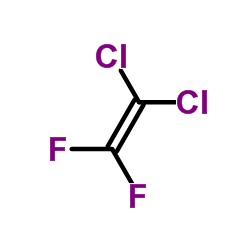
1,1-Dichloro-2,2-difluoroethene structure
|
Common Name | 1,1-Dichloro-2,2-difluoroethene | ||
|---|---|---|---|---|
| CAS Number | 79-35-6 | Molecular Weight | 132.924 | |
| Density | 1.5±0.1 g/cm3 | Boiling Point | 17.3±30.0 °C at 760 mmHg | |
| Molecular Formula | C2Cl2F2 | Melting Point | -116°C | |
| MSDS | N/A | Flash Point | -45.0±18.0 °C | |
| Name | 1,1-dichloro-2,2-difluoroethene |
|---|---|
| Synonym | More Synonyms |
| Density | 1.5±0.1 g/cm3 |
|---|---|
| Boiling Point | 17.3±30.0 °C at 760 mmHg |
| Melting Point | -116°C |
| Molecular Formula | C2Cl2F2 |
| Molecular Weight | 132.924 |
| Flash Point | -45.0±18.0 °C |
| Exact Mass | 131.934509 |
| LogP | 2.43 |
| Vapour Pressure | 999.2±0.0 mmHg at 25°C |
| Index of Refraction | 1.393 |
|
Section 1: Product Identification Chemical Name:1,1-Dichloro-2,2-difluoroethylene, min. 97% (Material sold in non-returnable cylinder) CAS Registry Number:79-35-6 Formula:CCl2=CF2 EINECS Number:201-198-3 Chemical Family:organofluorine compounds Synonym:2,2-Dichloro-1,1-difluoroethylene, Ethene, 1,1-dichloro-2,2-difluoro-
Section 2: Composition and Information on Ingredients IngredientCAS NumberPercentACGIH (TWA)OSHA (PEL) Title Compound79-35-6100%2.5mg/m3 (as F)2.5mg/m3 (as F) Section 3: Hazards Identification Toxic by inhalation. Irritating to skin, eyes and respiratory tract. May cause respiratory depression at high Emergency Overview: concentrations. May be harmful if swallowed. Primary Routes of Exposure:Ingestion, inhalation, eyes and skin Eye Contact:Causes irritation of the eyes. Skin Contact:Causes irritation of the skin. May cause redness, itching and pain. Inhalation:Toxic by inhalation. May cause respiratory depression or failure at high concentrations No specific information is available on the physiological effects of ingestion. May cause gastrointestinal Ingestion: irritation, nausea, and vomiting. Acute Health Affects:Toxic by inhalation. Irritating to skin, eyes and causes respiratory and nervous system depression. Product contains fluorine which under certain conditions of use, decomposition, or metabolism, may generate Chronic Health Affects:fluoride ion, causing, nausea, vomiting, labored breathing, hypocalcaemia, deterioration of bone and tooth structure, kidney and liver damage. NTP:No IARC:No OSHA:No SECTION 4: First Aid Measures Immediately flush the eyes with copious amounts of water for at least 10-15 minutes. A victim may need Eye Exposure: assistance in keeping their eye lids open. Get immediate medical attention. Wash the affected area with water. Remove contaminated clothes if necessary. Seek medical assistance if Skin Exposure: irritation persists. Remove the victim to fresh air. Closely monitor the victim for signs of respiratory problems, such as difficulty Inhalation: in breathing, coughing, wheezing, or pain. In such cases seek immediate medical assistance. Seek medical attention immediately. Keep the victim calm. Give the victim water (only if conscious). Induce Ingestion: vomiting only if directed by medical personnel. SECTION 5: Fire Fighting Measures Flash Point:not applicable Autoignition Temperature:no data Explosion Limits:no data Extinguishing Medium:carbon dioxide, dry powder, or foam If this product is involved in a fire, fire fighters should be equipped with a NIOSH approved positive pressure Special Fire Fighting Procedures: self-contained breathing apparatus and full protective clothing. Hazardous Combustion andIf involved in a fire, this material may emit toxic organic fumes, and corrosive hydrogen and carbonyl fluorides. Decomposion Products: Unusual Fire or Explosion Hazards: No unusual fire or explosion hazards. SECTION 6: Accidental Release Measures Small spills can be mixed with vermiculite, sodium carbonate or other suitable non combustible adsorbent and Spill and Leak Procedures: swept up. SECTION 7: Handling and Storage Handling and Storage:Store in a tightly sealed container in a cool well ventilated area. SECTION 8: Exposure Controls and Personal Protection Eye Protection:Always wear approved safety glasses when handling a chemical substance in the laboratory. Skin Protection:Wear protective clothing and gloves. Ventilation:This product should only be handled in an efficient fume hood. If ventilation is not available a respirator should be worn. The use of respirators requires a Respirator Respirator: Protection Program to be in compliance with 29 CFR 1910.134. Ventilation:This product should only be handled in an efficient fume hood. Additional Protection:No additional protection required. SECTION 9: Physical and Chemical Properties Color and Form:colorless liq. Molecular Weight:133 Melting Point:-116° Boiling Point:19°C Vapor Pressure:no data Specific Gravity:no data Odor:no data Solubility in Water:insoluble SECTION 10: Stability and Reactivity Stability:air and moisture stable Hazardous Polymerization:Hazardous polymerization possible Conditions to Avoid:Free radical initiators Incompatibility:oxidizing agents, halogens and active metals. Decomposition Products:carbon monoxide, organic fumes, hydrogen fluoride, and carbonyl fluoride SECTION 11: Toxicological Information Inhalation (rat); LC50: 505 mg/m3/4H. Inhalation (mouse); LC50: 610 mg/m3/4H. Inhalation (guinea pig); RTECS Data: LC50: 700 mg/m3/4H. Inhalation (rat); TCLo: 13400 ug/m3/4H/17W-I. Carcinogenic Effects:No data available Mutagenic Effects:No data available Tetratogenic Effects:No data available SECTION 12: Ecological Information Ecological Information:No information available SECTION 13: Disposal Considerations Disposal:Dispose of according to local, state and federal regulations. SECTION 14: Transportation Shipping Name (CFR):Compressed gases, Toxic, N.O.S. Hazard Class (CFR):2.3 Additional Hazard Class (CFR):NA Packaging Group (CFR):NA UN ID Number (CFR):UN #1955 Shipping Name (IATA):Prohibited Hazard Class (IATA):NA Additional Hazard Class (IATA):NA Packaging Group (IATA):NA UN ID Number (IATA):NA SECTION 15: Regulatory Information TSCA:Not listed in the TSCA inventory. SARA (Title 313):Title compound not listed. Second Ingredient:none SECTION 16 - ADDITIONAL INFORMATION N/A |
CHEMICAL IDENTIFICATION
HEALTH HAZARD DATAACUTE TOXICITY DATA
|
| Hazard Codes | Xi: Irritant; |
|---|---|
| Risk Phrases | R23 |
| Safety Phrases | S9-S23-S45 |
| RIDADR | 3162 |
| Packaging Group | II |
| Hazard Class | 6.1(a) |
| Precursor 9 | |
|---|---|
| DownStream 10 | |
| CFC 1112a |
| 1,1-dichlorodifluoroethylene |
| 1,1-DICHLORO-2,2-DIFLUOROETHYLENE |
| Ethylene,1,1-dichloro-2,2-difluoro |
| Genetron 1112a |
| 1,1-Dichloro-2,2-difluoroethene |
| MFCD00039338 |
| 1,1-dichloro-difluoroethene |
| 1,1-difluoro-2,2-dichloroethene |
| EINECS 201-198-3 |
| Ethene, 1,1-dichloro-2,2-difluoro- |
| 1,1-Difluoro-2,2-dichloroethylene |
| difluoro-dichloroethylene |
| Ethene,1,1-dichloro-2,2-difluoro |
| F 1112a |
 CAS#:76-11-9
CAS#:76-11-9 CAS#:359-29-5
CAS#:359-29-5 CAS#:354-23-4
CAS#:354-23-4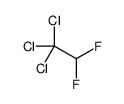 CAS#:354-12-1
CAS#:354-12-1 CAS#:75-37-6
CAS#:75-37-6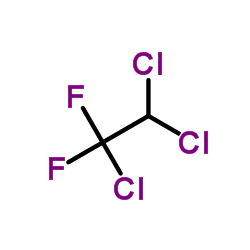 CAS#:354-21-2
CAS#:354-21-2 CAS#:75-38-7
CAS#:75-38-7 CAS#:116-14-3
CAS#:116-14-3 CAS#:662-06-6
CAS#:662-06-6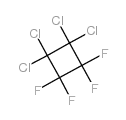 CAS#:336-50-5
CAS#:336-50-5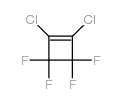 CAS#:377-93-5
CAS#:377-93-5 CAS#:41785-21-1
CAS#:41785-21-1 CAS#:306-83-2
CAS#:306-83-2 CAS#:374-07-2
CAS#:374-07-2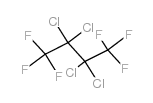 CAS#:375-34-8
CAS#:375-34-8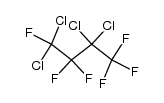 CAS#:57504-35-5
CAS#:57504-35-5 CAS#:75-44-5
CAS#:75-44-5 CAS#:353-50-4
CAS#:353-50-4 CAS#:354-24-5
CAS#:354-24-5